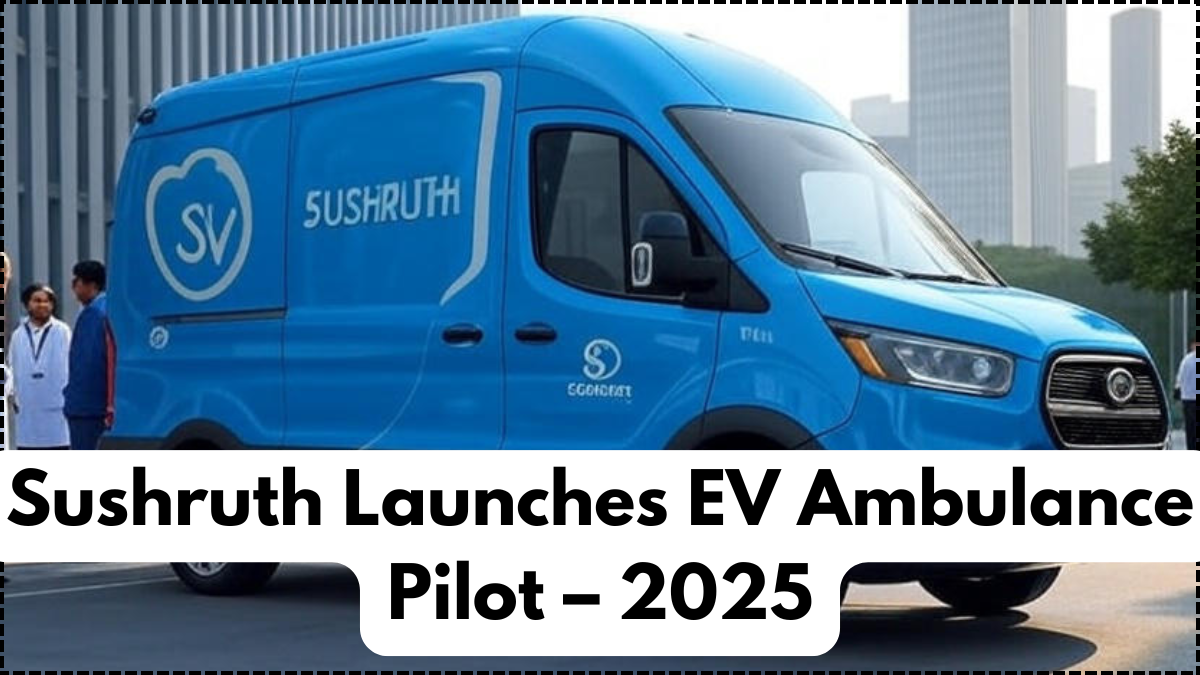The healthcare sector is shifting gears towards sustainability—and Sushruth Hospital is leading the way with its Electric Ambulances Pilot Program 2025. This groundbreaking initiative brings together innovation, environmental awareness, and medical preparedness by launching a fleet of electric-powered emergency vehicles.
As hospitals and governments across the world move toward cleaner energy, EV ambulance initiative models are proving to be both eco-friendly and economically viable. Sushruth Hospital’s pilot program stands out for focusing not just on replacing diesel engines but also reimagining the full ambulance infrastructure to suit the demands of 21st-century patient transport.
This initiative is more than a tech upgrade—it’s a healthcare transport revolution aligned with India’s broader goals of reducing carbon emissions.

The Need for Electric Ambulances in India
Traditional ambulances are among the most heavily used emergency vehicles, running 24/7 and consuming large quantities of fuel. With rising fuel costs and growing awareness about air pollution, hospitals are increasingly seeking alternatives. The Electric Ambulances Pilot Program 2025 was born out of this urgent need.
Key reasons for adopting electric ambulances include:
-
Lower operating and maintenance costs
-
Reduced environmental impact
-
Quiet operation for sensitive zones like hospitals
-
Instant torque and speed for rapid response
-
Compatibility with solar and smart-charging infrastructure
Sushruth’s EV ambulance initiative is designed to address these needs while still delivering top-tier emergency services.
Features of the EV Ambulances
The pilot fleet includes specially designed electric ambulances that meet high medical and performance standards. These vehicles have been engineered to ensure that there is no compromise in emergency response capabilities.
Here’s a quick comparison:
| Feature | EV Ambulance (2025 Model) | Traditional Ambulance |
|---|---|---|
| Engine Type | Electric Motor (Zero Emission) | Diesel/Petrol |
| Range per Charge/Tank | 180–220 km per charge | 300–400 km per tank |
| Noise Levels | Very Low | High |
| Charging/Fueling Time | 60–90 minutes (Fast Charger) | 5–10 minutes |
| Maintenance Cost | Lower | Higher (more moving parts) |
These vehicles are already making an impact in trial runs around the hospital campus and nearby urban zones.
Challenges and Future Plans
Despite the promise, implementing the Electric Ambulances Pilot Program 2025 isn’t without challenges. Charging infrastructure, especially in rural areas, remains underdeveloped. Also, backup plans are necessary for power outages or emergency cases that require extended travel.
Sushruth Hospital is collaborating with local energy providers and municipal planners to install dedicated EV charging stations within a 15-km radius of its main branches. As part of the EV ambulance initiative, the hospital plans to expand this pilot into a fully integrated electric fleet by 2027.
Key upcoming strategies include:
-
Staff training for electric vehicle operation
-
Investment in mobile fast-charging stations
-
Route optimization using AI and GPS tools
-
Patient feedback and response time tracking
Benefits to Healthcare and the Environment
The dual benefit of this program is undeniable. Patients receive reliable, safe, and modern transport while the environment gains from reduced emissions. The Electric Ambulances Pilot Program 2025 also contributes to national and global health standards by minimizing fossil fuel dependency.
Some direct benefits include:
-
Reduced air and noise pollution around hospitals
-
Eco-friendly image for healthcare providers
-
Alignment with India’s EV adoption goals
-
Public awareness about sustainable emergency services
Sushruth Hospital’s EV ambulance initiative also signals a shift in how we define quality healthcare—not just through treatment but through sustainable practices.
Conclusion
Sushruth Hospital’s Electric Ambulances Pilot Program 2025 is setting a benchmark in healthcare transport. By integrating electric vehicle technology with advanced medical care, the hospital is laying the foundation for a greener, more efficient emergency response system.
This is not just a shift in vehicle type—it’s a transformation in mindset. Through this EV ambulance initiative, Sushruth is proving that environmental responsibility and high-quality patient care can—and must—go hand in hand.
FAQs
What is the Electric Ambulances Pilot Program 2025?
It’s an initiative by Sushruth Hospital to test and roll out electric ambulances to replace traditional fuel-based emergency vehicles.
How many EV ambulances are in the pilot program?
Currently, the pilot includes a fleet of six electric ambulances deployed for city and inter-hospital emergency transport.
Are EV ambulances reliable during emergencies?
Yes. They have high torque, silent engines, and instant acceleration, making them highly suitable for emergency scenarios.
What challenges does the EV ambulance initiative face?
Infrastructure for fast charging, vehicle range, and initial investment costs are among the main challenges.
When will Sushruth fully transition to electric ambulances?
The hospital aims to transition its entire ambulance fleet to electric models by the year 2027.
click here to learn more